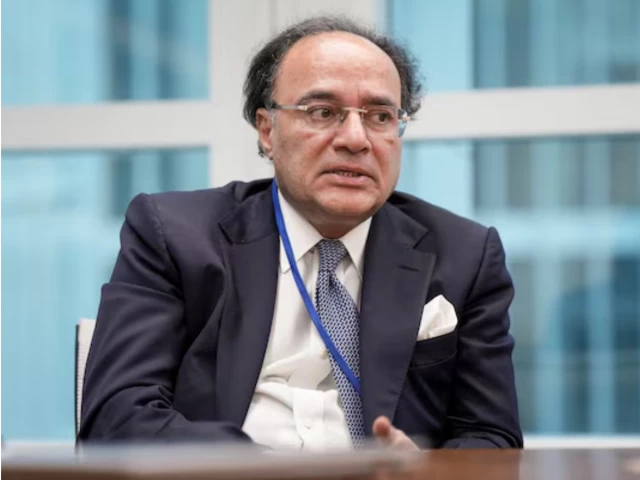Finance Minister Muhammad Aurangzeb speaks during a Reuters interview at the 2025 annual IMF/World Bank Spring Meetings in Washington, DC, US, April 25, 2025. Photo: Reuters/ File
ISLAMABAD:
Finance Minister Muhammad Aurangzeb has projected Pakistan’s economic growth of between 3.5 and 4 percent for the current fiscal year despite the severe impact of recent monsoon floods that destroyed farmland, displaced over four million people and killed over 900 across the country.
In an interview with Bloomberg, the finance minister said initial assessments showed damage to the country’s rice and cotton sectors, adding that more detailed damage assessments will take place in the coming months.
“This will put a dent in our GDP growth figures,” he said. “My own view is that it will still be north of 3.5% in the early days, but anywhere between 3.5 and 4.”
Before the floods, the Pakistani government projected economic growth of 4.2% for the fiscal year ending next June.
“Climate change for us is not academic,” he said. “We live it and the recent floods are actually a reflection of that.”
Pakistan’s economy has stabilized after a near-default on its sovereign debt two years ago. The country is set to receive about $1.2 billion in loans from the International Monetary Fund after signing a staff-level agreement with the IMF following a successful review of its $7 billion loan program.
The third installment of the loan is expected to help shore up the country’s $407 billion economy, which has stabilized after it narrowly avoided a sovereign debt default two years ago.
The IMF estimates that the country’s economy will grow between 3.25% and 3.5% in the financial year to June, despite the devastating monsoon rains.
Pakistan forecasts that inflation could cross the upper end of its 5%-7% target range this year, cooling from a record high of 38% two years ago.
Meanwhile, Pakistan and the United States have moved to rebuild military and economic ties after years of strain.
Economic ties have grown with a trade deal that levied a 19% tariff on Pakistani goods, lower than regional peers and well below the 50% tariff on rival India, Bloomberg reported.
The finance minister also said Pakistan planned to issue its opening tranche of yuan-denominated debt – known as Panda bonds – in late November or early December.
The issuance of $250 million is key to diversifying the country’s financing channels, he said. “We’ve tapped into the US dollar market, we’ve done euros, we’ve done Islamic sukuk, but we didn’t have access to the second-largest, second-deepest capital market in the world,” he said.



